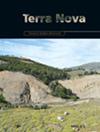细菌EPS与早期种皮发育的相关性
IF 1.7
3区 地球科学
Q2 GEOSCIENCES, MULTIDISCIPLINARY
引用次数: 0
摘要
细菌是我们所知道的地球上最丰富的生命形式,能够在各种栖息地生存,在矿物形成和转化过程中发挥着重要作用。在这里,我们介绍了实验室实验,在这些实验中,用硫还原地理杆菌细胞接种未固结的石英颗粒,并将其暴露于矿物培养基溶液中96 在60°C和120°C之间的温度下工作小时。实验数据显示细胞外聚合物(EPS)与颗粒涂层材料的早期形成之间的相互依赖性。EPS的出现促进了纤网和桥接结构的发展,这些结构结合了石英颗粒并形成了EPS涂层表面。随着温度的升高,无定形矿物相优先在这些表面生长,这表明EPS可以作为矿物成核的模板。在>100°C的温度下,无定形自生相的结晶度增加,转变为无序的玫瑰花结状结构。本文章由计算机程序翻译,如有差异,请以英文原文为准。
Interdependence between bacterial EPS and early grain coat development
Bacteria are the most abundant forms of life we know on our planet, able to survive in a variety of habitats, that play an important role in mineral formation and transformation processes. Here, we present laboratory experiments in which unconsolidated quartz grains were seeded with Geobacter sulfurreducens cells and exposed to a mineral medium solution for 96 hours at temperatures of between 60°C and 120°C. Experimental data show the interdependence between extracellular polymeric substances (EPS) and the early formation of grain‐coating material. The occurrence of EPS promotes the development of web and bridging structures binding the quartz grains and creating EPS‐coated surfaces. With increasing temperature, an amorphous mineral phase grows preferentially on these surfaces suggesting that EPS can act as a template for mineral nucleation. At temperatures >100°C, the order of crystallinity of the amorphous authigenic phase increases, transitioning to poorly‐ordered rosette‐like textures.
求助全文
通过发布文献求助,成功后即可免费获取论文全文。
去求助
来源期刊

Terra Nova
地学-地球科学综合
CiteScore
4.80
自引率
8.30%
发文量
59
审稿时长
2.3 months
期刊介绍:
Terra Nova publishes short, innovative and provocative papers of interest to a wide readership and covering the broadest spectrum of the Solid Earth and Planetary Sciences. Terra Nova encompasses geology, geophysics and geochemistry, and extends to the fluid envelopes (atmosphere, ocean, environment) whenever coupling with the Solid Earth is involved.
 求助内容:
求助内容: 应助结果提醒方式:
应助结果提醒方式:


